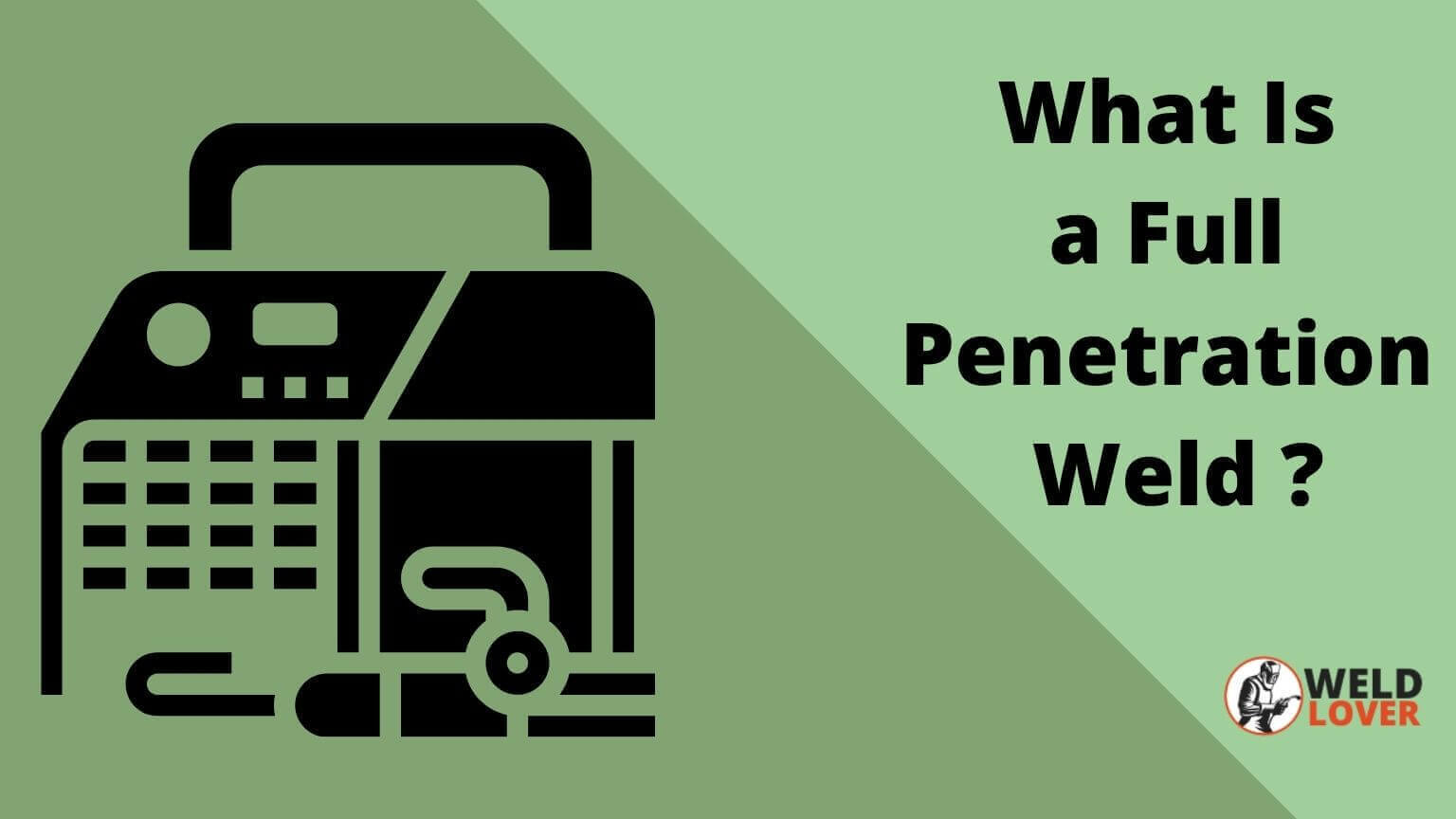The flaws in the welding techniques badly impact the integrity of the welded material. Multiple techniques are employed to weld the material. If you are there to learn full penetration welding, also termed as complete penetration welding, in detail, then proceed with the reading.
What is full penetration welding? It is a type of welding technique that we use to weld two metals without forming any gap in the welds. Significantly, this method is employed to weld the metals with great stress resistance because the filler metal works to fill the roots of the joints.
The shiny side is full penetration welding that bestows more strength to the weld as compared to partial welding. Eventually, the metal welded by full penetration welding technique is ideally for high resistance applications.
Related: What is a seal weld
Contents
How to create a full penetration weld?
The welds formed employing the full pen welding are bulky because they are pierced and beveled via various weld passes. Interestingly, the joints with 2 inches or more thickness can be penetrated without a groove bevel. Apart from that, you can create a full pen weld by beveling the weld and then filling it with the number of weld passes.
High power of 1 MW per square meter is necessary to perform deeper penetration. Moreover, the sharper arc results in improved weld strength and timely execution of the tasks. The process also demands a butt weld, which acts like a filler metal that instantly fuses with the base metal.
Related:
What factors affect the quality of the welds produced through the weld penetration procedure?
The following are factors that impact the most on the quality of welds in full penetration welding:
Deposition rate:
The pace of wire feed rules the deposition rate. If you want to get the particular deposition rate, you can deviate the current tip to metal distance. A minor gap between the metal and tip of the welder results in high current and reduced wire feed speed. As a result, the weld will get deeper penetration and low metal deposition. Similarly, if you are aiming for weak penetration, maintain a long tip to the metal gap.
Polarity:
The type of polarity determines the level of perforation in the welds. The under given polarity types have the following effects in full penetration welding:
1. +ve DC Electrode:
A large amount of arc energy is centralized into the base plate instead of the electrode, and that’s why more energy perforation is formed.
2. -ve DC Anode:
A considerable portion of arc energy is centralized on the anode instead of the base plate. That’s why less energy perforation is formed.
Torch’s position:
The degree of perforation depends upon the position of the torch, but the impact is significantly lower than the voltage or the arc speed. If you aim to achieve deeper penetration, the backhand welding technique would be better than the forehand welding technique. To attain ultimate penetration, the 25-degree torch angle along with the backhand welding technique is ideal.
Voltage:
The voltage of the welder plays a significant role in the quality of the weld. Moreover, higher voltage generates increased arc speed which results in low penetration. In order to attain deeper penetration to weld thick metals, you should adjust the voltage to the lowest in order to produce a directed arc.
What are the benefits of full penetration welding?
Complete pen welding has multiple advantages over incomplete or partial penetration welding. Important among these are:
Anti-corrosive:
If you are utilizing the complete penetration welding, then it has absolute corrosion resistance. Moreover, the joint line is perfectly melted in that case which is smoother as compared to partial penetration and gives anti-corrosive welds.
Robust welds:
As mentioned above, the full penetration leads to a stronger weld because of the wide weld bead. In this welding technique, the joint has meshed, resulting in more metal volume for sturdiness. In comparison, partial penetration welding leads to gaps in the joint, which makes it vulnerable.
Incredible fusion:
In deeper penetration, there is a huge chance that the filler metal gets to the root and covers more space which increases the durability of the weld. But if we talk about incomplete penetration welding, it has partial fusion at the joint’s root.
What are the drawbacks of full penetration welding?
In spite of various advantages, full pen welding has some serious flaws, which are as follows:
Dilution of the weld:
The dilution of welds happens when you utilize full penetration welding in brutal handling and overlay applications. It makes the weld least resistive to corrosion because overlay welds with ultimate penetration result in an elevated admixture of the workpiece. In contrast, incomplete penetration welding helps you get better-quality joints.
Workpiece burnout:
We have mentioned earlier that the full penetration welding technique is not suggested for welding thin metals. The reason is more than enough arc penetration on thin metal sheets burns the metal from the joint. Apart from that, complete penetration welding will also lead to centerline cracks.
Weld puddle:
More than enough admixture at the joint’s root is the major problem many faces with full penetration welding. The deeper arc penetration leads to an elevated volume of the workpiece metal resulting in a weld puddle that increases the likelihood of weld crack. You cannot go with deep penetration welding when you have to weld thin and high-low melting point metals.
Final Words:
In the full penetration welding technique, all the materials between the joints are fused, but you should execute this method properly for desired results. This procedure is better than partial penetration welding because the joints created as a result are robust, smooth & full, and corrosion-resistant.
At the same time, you must be fully aware of the risks associated with deeper penetration of arcs from the welder. The striking flaws of this technique are base metal burnout, diluted deposits of weld, and weld puddle. We have provided you with a guide on what is a full penetration weld and how to make that one.




